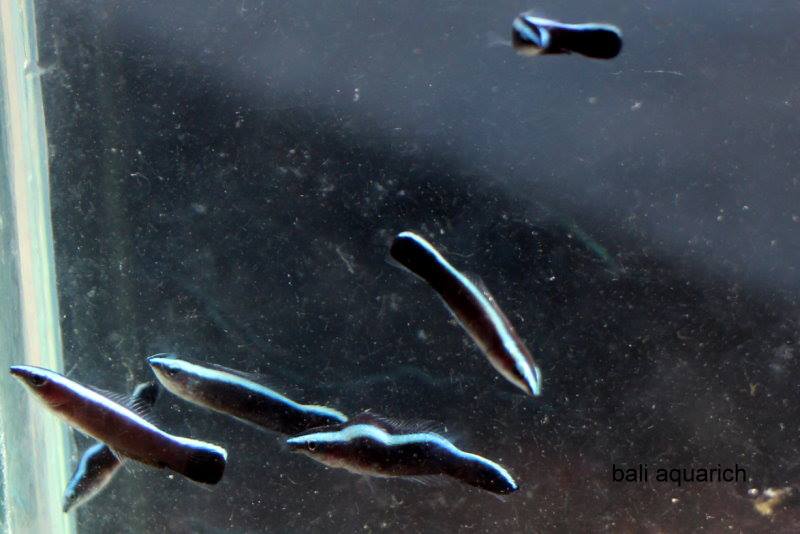Hobbyist have been chipping away at attempting to successfully breed the cleaner wrasse, Labroides dimidiatus, for years, with many well-documented captive spawns in Germany and the United States, yet nothing more came from those spawns. Then a 53-day success was reported in Taiwan in 2010 which might represent the species first at that timeframe, but again…nothing more.
An intriguing photo appeared online this past Wednesday by Wen-Ping Su of Bali Aquarich, with the caption “Breeding Labroides dimidiatus. Still unknown why there is a higher proportion of deformity.” To echo the Bing-translated comments, “If the number is more than enough! Issue of the malformations will be ignored!” I can only wholeheartedly agree — get enough through and the fact that you’ll have to cull some is just part of the process.

I cannot overstate the importance of this potential breakthrough. What Wen-Ping Su shared are juvenile cleaner wrasses (yes, that’s what they look like when young) that are probably market size, or close to it. Not only would this represent a definitive success of the first tropical pelagic-spawning wrasse species to be cultivated in captivity, but it is one of the most contentious marine fish we harvest from the reefs.
It’s almost to be expected with the ever-growing litany of insane leaps coming out of Bali Aquarich, with its recent success stories with the Pinnatus Batfish, Annularis Angelfish and Clarion Angelfish, that the first commercially available, captive-bred wrasse might originate from these hallowed waters.
Earlier this year, our own Jake Adams was able to witness these fish first-hand in Bali; the video speaks for itself:
Interestingly, as Jake relayed the story today, Wen-Ping Su raised these BY ACCIDENT. You see, apparently there are a couple pairs of cleaner wrasses living with the Clarion Angelfish and other large angelfish broodstock. The cleaner wrasses spawn daily (as more than one aquarist has observed as well). Rearing attempts on the spawns of large angelfish produced this interesting byproduct — captive bred cleaner wrasses.
Here’s an animal with a typically dismal track record in captivity that also performs a critical biological role on the reef, and is one of the most popular species all the same. Cleaner wrasses are one of those fish on most folk’s “we shouldn’t harvest” list. We absolutely should have captive-bred cleaner wrasses, and we should pay a premium for them!
Of course, when cleaner wrasses can be transferred onto prepared foods, they do fair well in captivity. Having captive-bred specimens ought to change this species outlook the way captive breeding can do for seahorses, Mandarins, and Harlequin filefish. Bali Aquarich stands to put another game changer in our tanks and we applaud the advancement.
We don’t know if Bali Aquarich will be sending out bucketfuls of captive-bred cleaner wrasses to importers and wholesalers, but we hope these byproducts continue to be reared and hopefully offered into the market.
Unfortunately, it may take the same amount of effort to rear a several-thousand-dollar Clarion Angelfish as it takes to rear a the captive-bred equivalent of a $30 wild-caught cleaner wrasse…and that presents a problem for the commercial culturist. Hopefully, people will open up their hearts and wallets for these game-changing fish, should they ever be made available.



